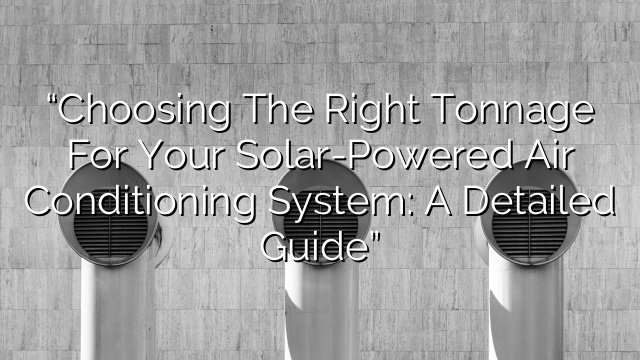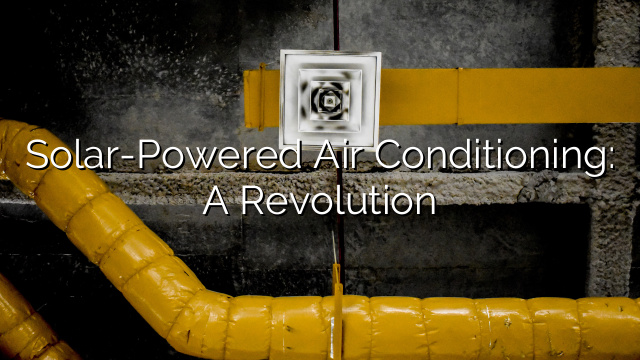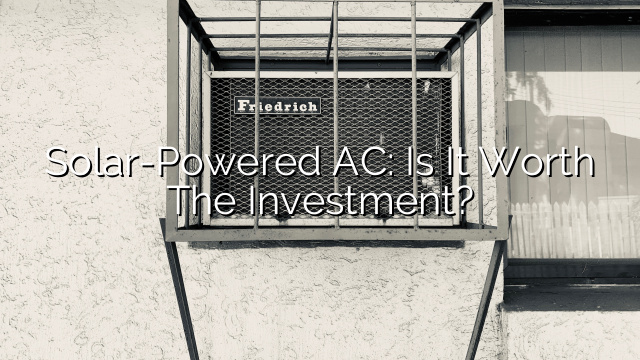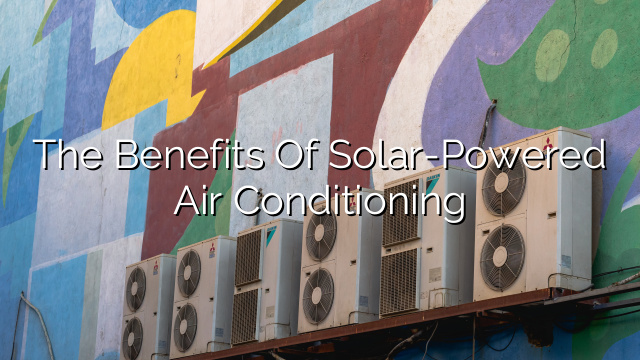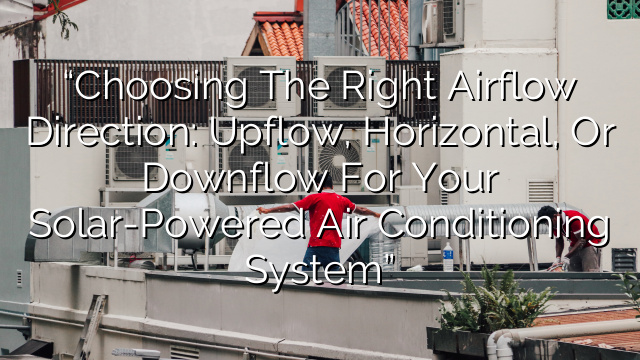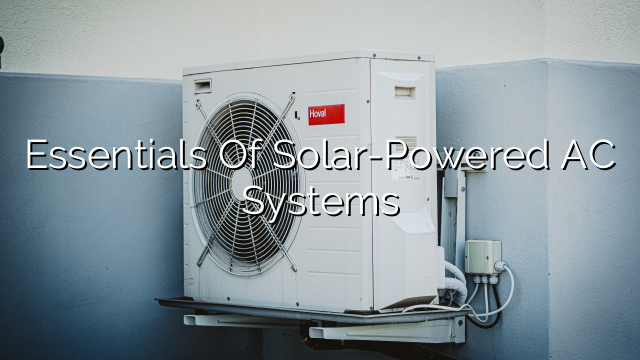FAQ
Q: What is solar air conditioning?
A: Solar air conditioning is a system that uses solar panels to generate electricity, which powers an air conditioning unit. It is an eco-friendly alternative to traditional air conditioning systems that rely on fossil fuels.
Q: How does solar air conditioning work?
A: Solar air conditioning works by harnessing the sun’s energy through solar panels. The solar panels convert sunlight into electricity, which is used to power the air conditioning unit. This reduces the reliance on the electrical grid and lowers energy costs.
Q: What are the benefits of solar air conditioning?
A: The benefits of solar air conditioning include:
- Reduced carbon footprint
- Lower energy bills
- Eco-friendly and sustainable
- Less reliance on fossil fuels
- Potential for tax credits or incentives
Choosing the Right System
- Assess Your Cooling Needs:
- Before purchasing a solar-powered air conditioning system, it’s important to assess your cooling needs. Consider factors such as the size of your home, the number of rooms you want to cool, and your average daily energy usage. This will help you determine the capacity and type of system that is best suited for your needs.
- Research Different Options:
- There are several types of solar air conditioning systems available on the market, so it’s important to do your research and compare different options. Look for systems that are energy-efficient, have good reviews, and come with warranties. You may also want to consider whether you want a centralized system that cools your entire home or individual units for each room.
- Consider Your Budget:
- Solar-powered air conditioning systems can vary in price depending on the brand, size, and type of system. It’s important to consider your budget and find a system that fits within your price range. Keep in mind that while solar air conditioning systems may have a higher upfront cost, they can save you money in the long run by reducing your energy bills.
Installation Process
1. Find a Suitable Location: The first step in installing a solar-powered air conditioning system is to find a suitable location for the solar panels. The panels should be placed in an area that receives maximum sunlight throughout the day, such as the roof of your home. Ensure that there are no obstructions, like trees or nearby buildings, that could cast shadows on the panels.
2. Install the Solar Panels: Once you have identified the best location for the solar panels, it’s time to install them. This process involves mounting the panels securely on your roof or another suitable surface using brackets, rails, and screws. Make sure to follow the manufacturer’s instructions carefully and consider hiring a professional if needed.
3. Connect the Panels to the Inverter: After the solar panels are installed, you need to connect them to an inverter. The inverter converts the direct current (DC) generated by the solar panels into alternating current (AC) that your air conditioning system can use. This step may require some wiring work, so it’s important to hire a licensed electrician to ensure the process is done safely and correctly.
4. Install the Air Conditioning System: Once the panels are connected to the inverter, it’s time to install the air conditioning system itself. This may involve mounting the outdoor unit, running refrigerant lines, and installing the indoor unit. Depending on the complexity of the system, you may need to hire a professional HVAC technician to handle the installation.
5. Connect the System to the Solar Panels: After the air conditioning system is installed, it needs to be connected to the solar panels. This step involves connecting the inverter to the system and ensuring that the electrical connections are secure. Again, it’s important to hire a licensed professional to ensure the system is properly connected and functions correctly.
6. Test and Adjust: Once the installation is complete, it’s important to test the system and make any necessary adjustments. This may involve checking the refrigerant levels, adjusting the thermostat settings, and testing the overall performance of the system. If you encounter any issues or have concerns, contact the manufacturer or a qualified technician for assistance.
Maintenance and Upkeep
- Clean the Solar Panels: Regularly clean the solar panels to ensure maximum efficiency. Use a soft cloth or sponge and mild detergent to remove any dirt, debris, or dust that may accumulate on the surface of the panels.
- Check for Damage: Periodically inspect the solar panels, wiring, and inverter for any signs of damage. This includes cracks, loose connections, or corrosion. If you notice any issues, contact a professional for repairs.
- Monitor Energy Usage: Keep track of your energy usage and monitor how much energy your solar-powered air conditioning system is generating. This can help you identify any potential issues or inefficiencies.
- Schedule Professional Maintenance: It’s a good idea to schedule regular maintenance checks with a professional HVAC technician. They can inspect and tune up your system, ensuring that it continues to operate at peak performance.
Conclusion
Solar air conditioning is a sustainable and energy-efficient solution for cooling your home. By harnessing the power of the sun, you can reduce your carbon footprint and save money on energy bills. When choosing a solar air conditioning system, consider your cooling needs, research different options, and stay within your budget. The installation process involves finding a suitable location for the solar panels, installing them with care, connecting them to an inverter, and installing the air conditioning system. Regular maintenance and upkeep, including cleaning the solar panels, checking for damage, monitoring energy usage, and scheduling professional maintenance, will ensure that your solar air conditioning system continues to operate effectively. Embrace solar air conditioning and enjoy a cool and sustainable home.


